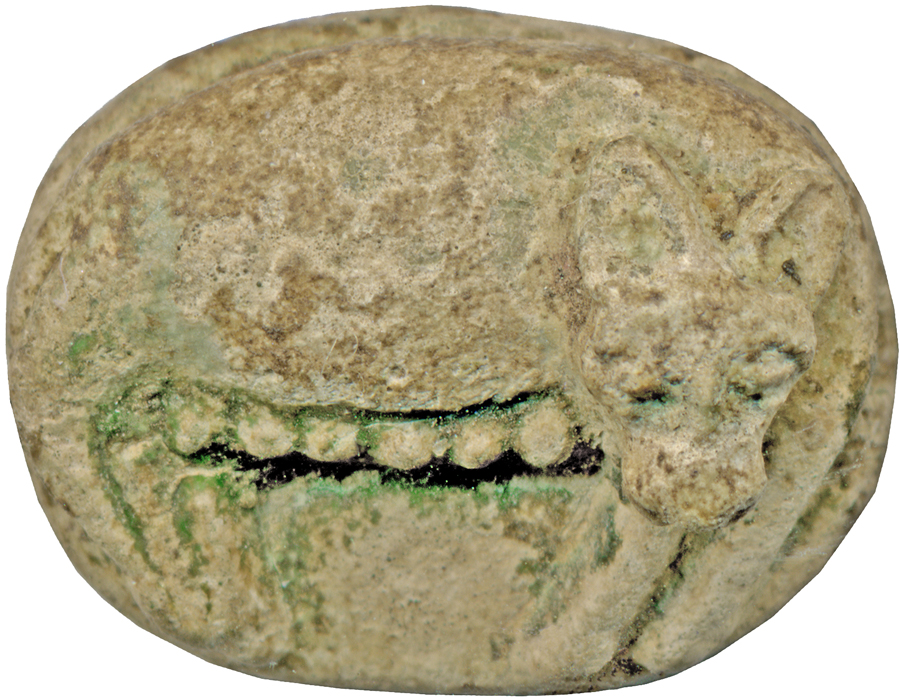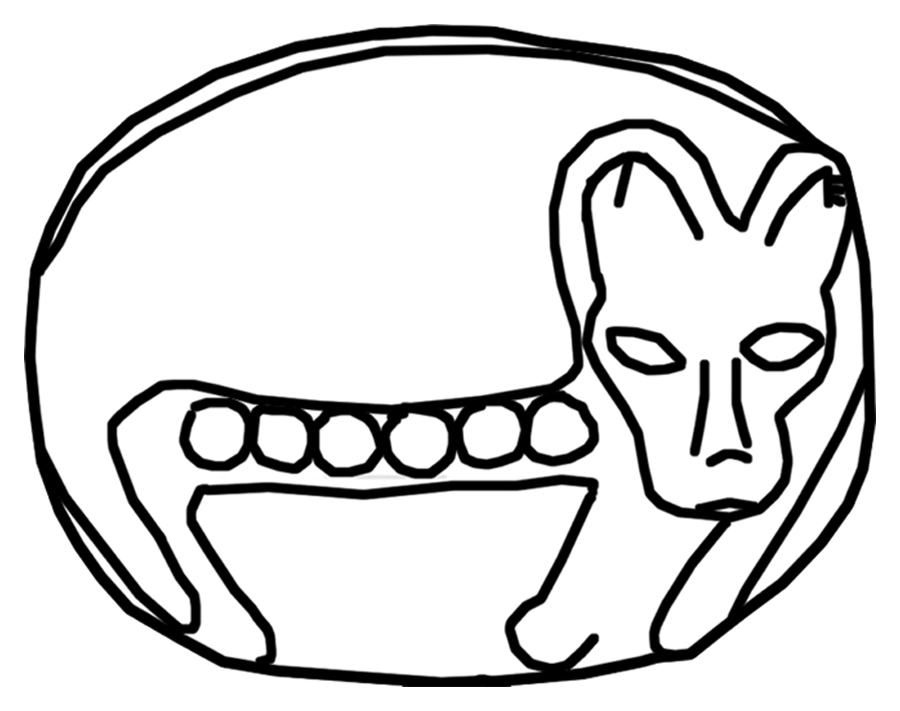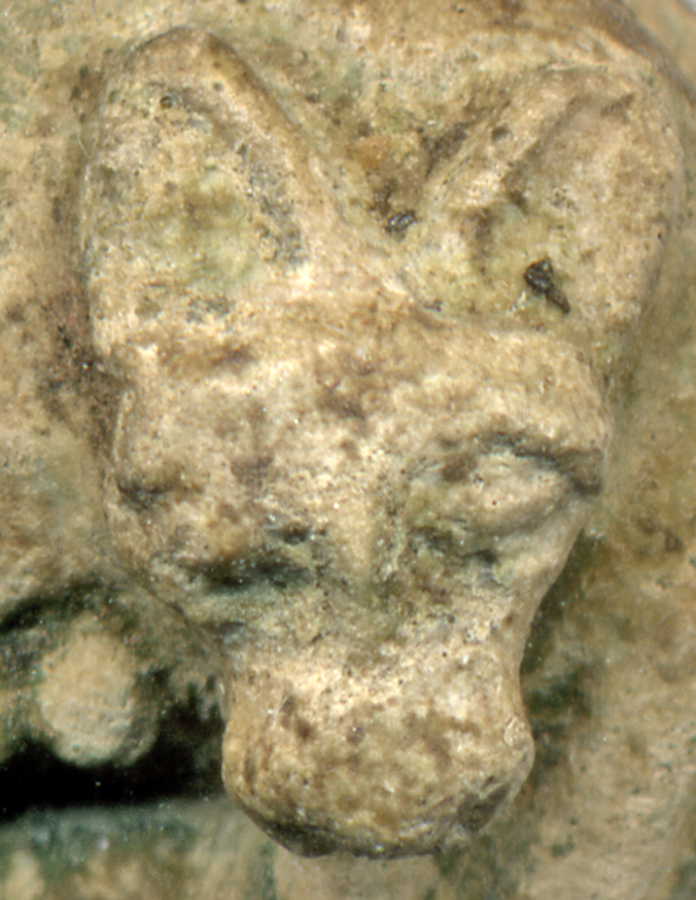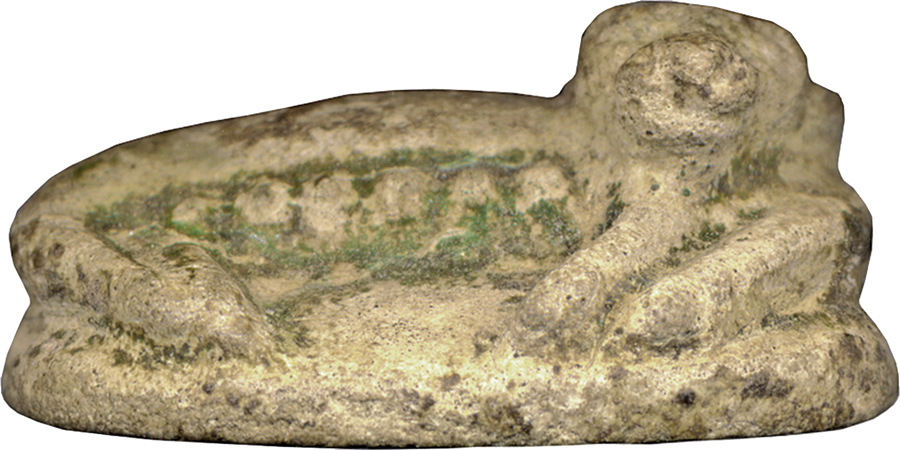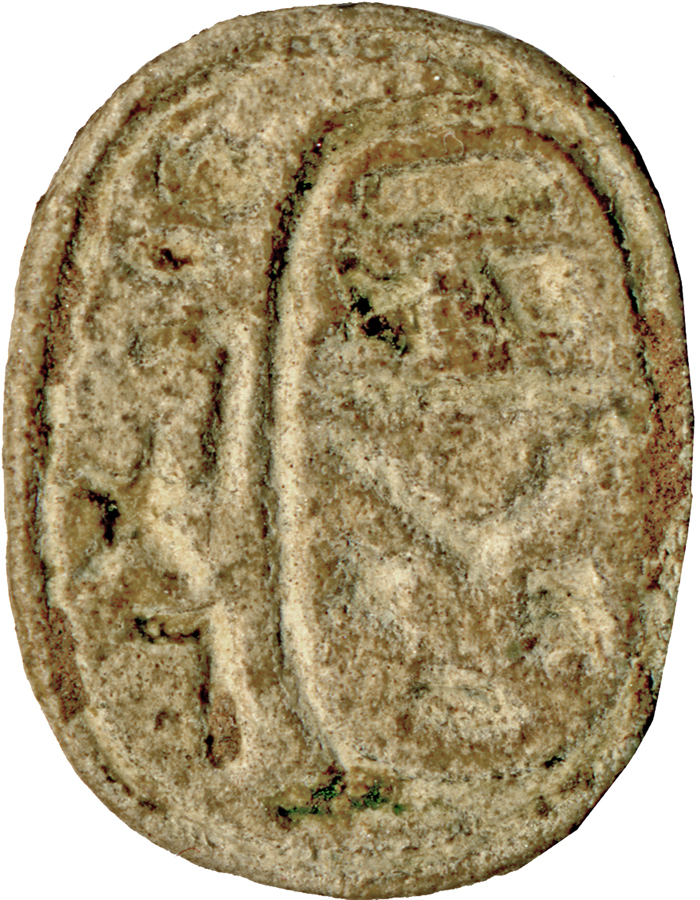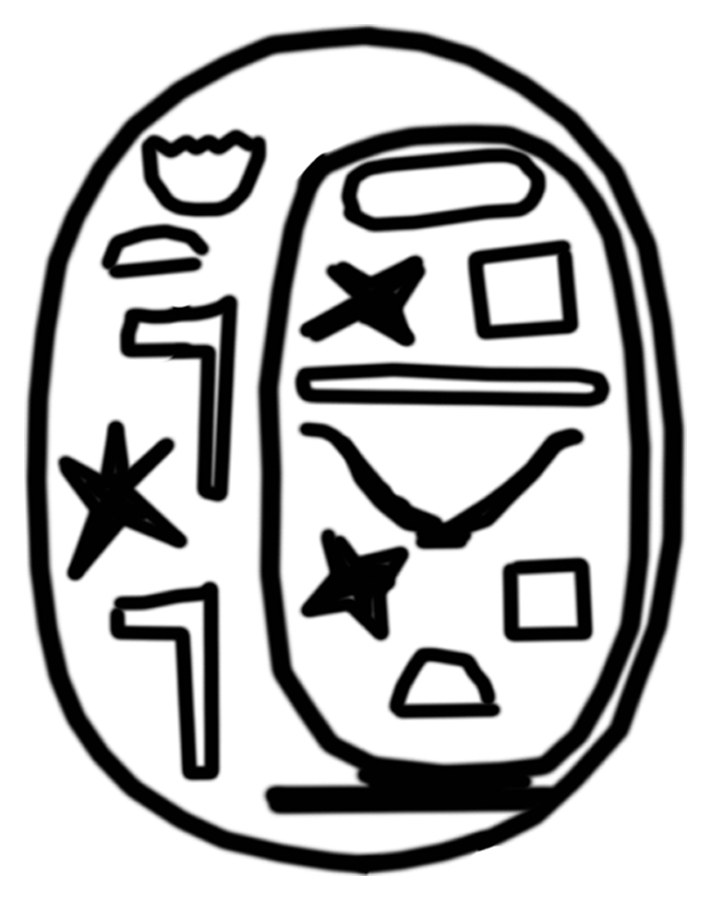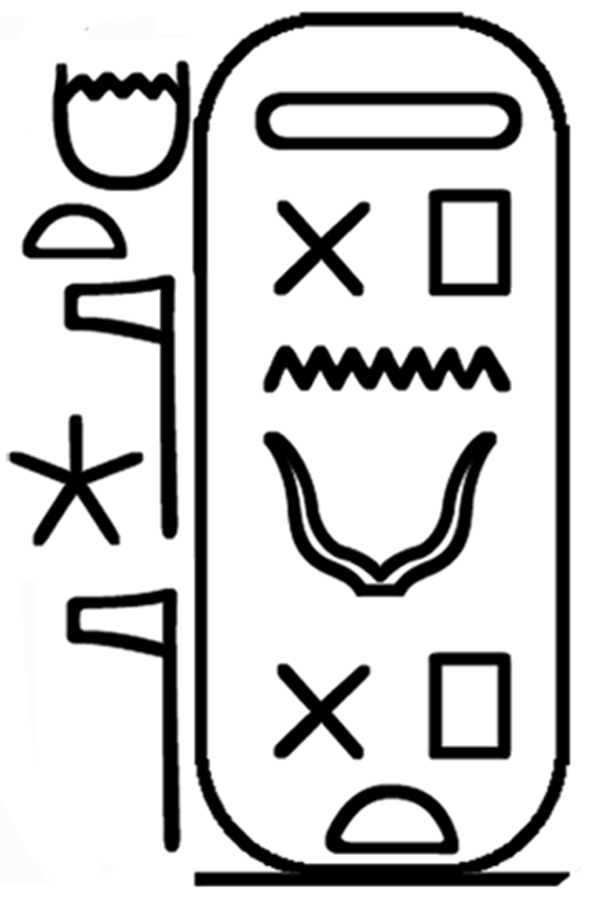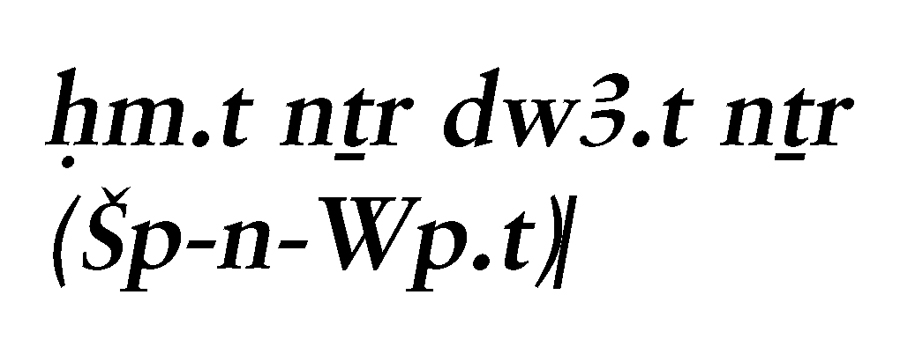Scarab with Cat and Title of Shepenwepet
(Ancient Egypt and Nubia )
This scaraboid faience amulet is inscribed on the bottom with the name and title of the divine consort Shepenwepet. The top is carved with the three-dimensional representation of a cat facing the right with the head turned to the front. The workmanship is a little rough, but detailed.
This piece functioned as an individualized amulet of the Divine Consort Shepenwepet II, and was originally mounted or threaded. The image of a cat with kittens conveys the idea of fertility, renewal, and protection, and the name of Shepenwepet the individualization. The amulet should secure the divine status, royal authority of the "Divine Consort," as well as her presence and renewal. It is possible that the amulet was created for the personal use of Shepenwepet, but it is also likely that it was given to a private person to guarantee her patronage.
The identification of the lying animal as a cat is possible by posture, content and comparision, but the round shapes of the ears are a litttle uncommon and seem more canine. Nevertheless, the attitude of the animal, and the context make identification as cat most likely.
Inscription
Provenance
Provenance (from the French provenir, 'to come from/forth') is the chronology of the ownership, custody, or location of a historical object. Learn more about provenance at the Walters.
Henry Walters, Baltimore [date and mode of acquisition unknown]; Walters Art Museum, 1931, by bequest.
Geographies
Egypt, Luxor (Thebes) (Place of Origin)
Measurements
H: 3/8 x W: 9/16 x L: 11/16 in. (0.9 x 1.4 x 1.8 cm)
Credit Line
Acquired by Henry Walters
Location in Museum
Accession Number
In libraries, galleries, museums, and archives, an accession number is a unique identifier assigned to each object in the collection.
In libraries, galleries, museums, and archives, an accession number is a unique identifier assigned to each object in the collection.
42.48

